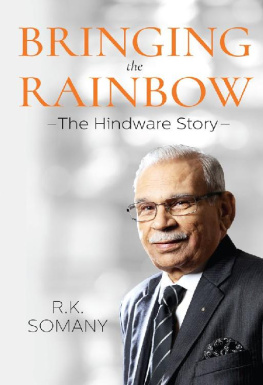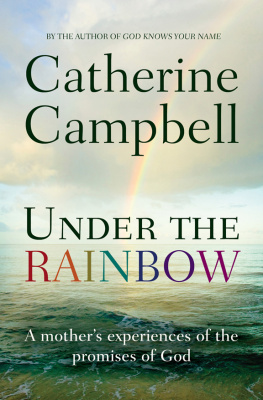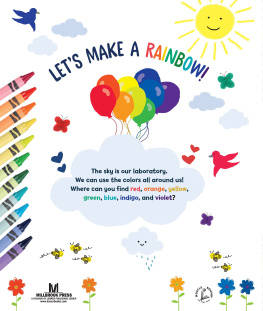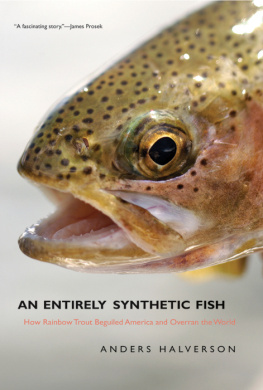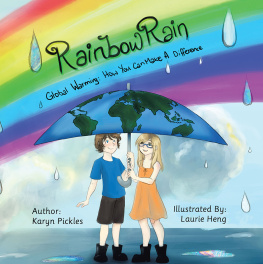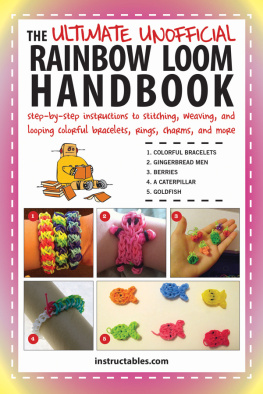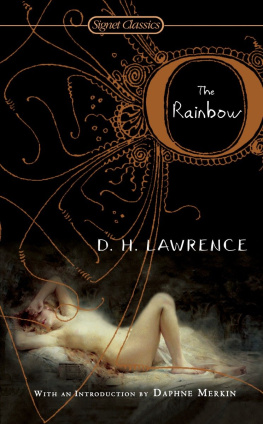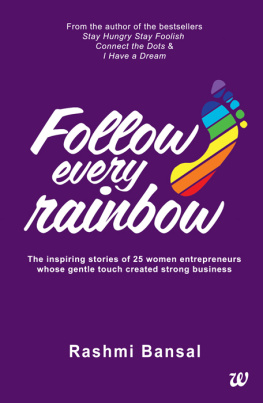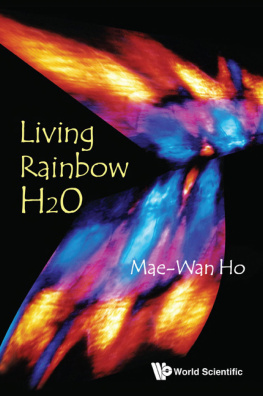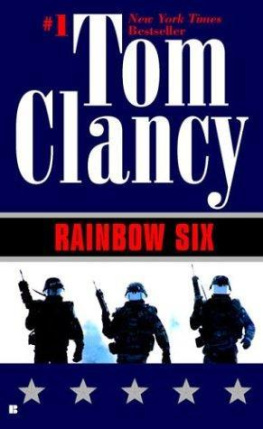R.K. Somany - Bringing the Rainbow: The Hindware Story
Here you can read online R.K. Somany - Bringing the Rainbow: The Hindware Story full text of the book (entire story) in english for free. Download pdf and epub, get meaning, cover and reviews about this ebook. year: 2016, publisher: Rupa & Co, genre: Home and family. Description of the work, (preface) as well as reviews are available. Best literature library LitArk.com created for fans of good reading and offers a wide selection of genres:
Romance novel
Science fiction
Adventure
Detective
Science
History
Home and family
Prose
Art
Politics
Computer
Non-fiction
Religion
Business
Children
Humor
Choose a favorite category and find really read worthwhile books. Enjoy immersion in the world of imagination, feel the emotions of the characters or learn something new for yourself, make an fascinating discovery.
- Book:Bringing the Rainbow: The Hindware Story
- Author:
- Publisher:Rupa & Co
- Genre:
- Year:2016
- Rating:4 / 5
- Favourites:Add to favourites
- Your mark:
- 80
- 1
- 2
- 3
- 4
- 5
Bringing the Rainbow: The Hindware Story: summary, description and annotation
We offer to read an annotation, description, summary or preface (depends on what the author of the book "Bringing the Rainbow: The Hindware Story" wrote himself). If you haven't found the necessary information about the book — write in the comments, we will try to find it.
Bringing the Rainbow: The Hindware Story — read online for free the complete book (whole text) full work
Below is the text of the book, divided by pages. System saving the place of the last page read, allows you to conveniently read the book "Bringing the Rainbow: The Hindware Story" online for free, without having to search again every time where you left off. Put a bookmark, and you can go to the page where you finished reading at any time.
Font size:
Interval:
Bookmark:


Published in Maven by
Rupa Publications India Pvt. Ltd 2016
7/16, Ansari Road, Daryaganj
New Delhi 110002
Copyright R.K. Somany 2016
The events are portrayed to the best of the authors recall and understanding.
The conversations are not written verbatim.
The views and opinions expressed in this book are the authors own and the facts are as reported by him which have been verified to the extent possible, and the publishers are not in any way liable for the same.
All rights reserved.
No part of this publication may be reproduced, transmitted, or stored in a retrieval system, in any form or by any means, electronic, mechanical, photocopying, recording or otherwise, without the prior permission of the publisher.
ISBN: 978-81-291-4211-5
First impression 2016
10 9 8 7 6 5 4 3 2 1
The moral right of the author has been asserted.
This book is sold subject to the condition that it shall not, by way of trade or otherwise, be lent, resold, hired out, or otherwise circulated, without the publishers prior consent, in any form of binding or cover other than that in which it is published.
To my mother Janki Devi Somany
CONTENTS
PROLOGUE
It was 30 December 1959, the eve of the new decade. Soon there would be the excitement of celebrations in Delhi, but at the time, my wife and I were lulled into half-sleep by the clacking of the train. We were on our way from Calcutta (Kolkata) for a cousins wedding.
It is said that life is full of surprisesand I was to discover that soon after reaching Delhi. Landing amidst the festivities, the wedding celebrations compounded by the revelries for the new year, I would be starting what would become one of the greatest adventures of my life.
Ashoka Hotel, where we were staying, laid out a rich spread, even organizing a separate kitchen for the many wedding guests who, like us, were strict vegetarians. My wife was captured by the other women of the family and I was considering my social options when Bhaijimy eldest brother, now touching the ripe age of 96called from Calcutta. Long-distance calls were a rarity in those days and my first reaction was anxiety.
Bhaiji quickly allayed my fears and moved on to the reason for the call. There were negotiations on for buying some land in Bahadurgarh in Punjab (now in Haryana). Some of the land had already been purchased but, suddenly and unexpectedly, farmers owning acreage in the middle of the area we sought were refusing to sell. Bhaiji said the farmers were probably holding out for an unreasonably large compensation and he wanted me to look into the matter and find a way out of the stalemate.
The next morning I set off for Bahadurgarh. I got myself an old Morris Minor and drove myself; we had no driver in Delhi; the car had no air-conditioning, no power-steering; it was old. Today, the 38-km drive along NH 10 (National Highway 10) is a breeze. At that time, it was along rutted mud roads, the bouncing old Morris Minor shaking my bones with every rotation of its wheels.
As I was fretting, I saw a rainbow appear on the horizon and the drive suddenly turned beautiful. A chore became exciting. That was my moment of epiphany. The rainbow became my guiding mantra. In whatever I do, as a businessperson, a father, a husband, a friend and a family man, I ask myself: Am I bringing the rainbow to this? The passion, the excitement, the colour?
I reached Bahadurgarh to an obstinate standoff, a deadlock that did not let up after several attempts at negotiation over a tiresome three weeks, with just my always-present stock of Perry Mason murder mysteries to provide much-needed diversion. No offer sufficed and no demand stayed constant. The farmers could not understand what industrial development would mean, how it could benefit them. And someone was brewing trouble by spreading rumours about how we were acting for Indias largest business house then, and hadwhat would now be termeddeep pockets.
Finally, I suggested to Bhaiji that we seek government help. By a fortuitous coincidence, the then chief minister of Punjab, Pratap Singh Kairon, was visiting a plant in Serampore in West Bengal and Bhaiji met him there. On learning of our troubles at Bahadurgarh, that great visionary leader, who laid the foundations for modern Punjab, Haryana and Himachal Pradesh, who famously told Jawaharlal Nehru, Dont meddle in my state, and who was then also the minister for industrial development for the united Punjab province, said, simply: Chalo ji, ho gaya! [Its okay, sir, its done!]
And, thus, the Bahadurgarh plant was conceived. The birthing process had its own pains, however. Though the government had ordered that the land would be acquired for industrial development, the papers moved slowly, numerous trunk calls were made, and ultimately, we had to appoint one person to be at hand in the administrative offices to actually just carry the papers from table to tablewithin and between Chandigarh, Jhajjar and Rohtak! Finally, we were the proud owners of 95 acres allocated for our glassware and sanitaryware manufacturing plants.
It was a long way from home in Calcutta, and the time I spent there was a lesson in combating homesickness, too! The discipline instilled in me by the Christian priests at St Xaviers Collegiate School, Calcutta, helped, as it has throughout my life, in everything I do, as have the moral science lessons taught in my missionary school.
These lessons have come together to instil in me the sense of what corporate citizenship meansto repay those who have given us so much, be it the investors, the employees, the local community that supports our operations or society at large, that fosters our well-being.
That was the beginning of the great adventure that has been my association with Hindware!
The events in this book are portrayed to the best of my recollection and understanding.
MY EARLIEST RECOLLECTIONS
T he early years of the twentieth century were a time of great hope and greater adventure. Many an intrepid Marwari lad were leaving their arid homeland in Rajasthan for Calcutta and Bombay (as these great metropolises were then called) in search of fame and fortune. Many achieved their ambitions, going on to become, even then, household names in the world of business and commerce.
My grandfather, Ram Prasad, and his brother, Mahadev, were two such men. Though the Somanys were a well-to-do family in Chirawa, in the Jhunjhunu district of Rajasthan, Ram Prasad was consumed with the ambition of achieving something bigger. We had a thriving moneylending business, some agricultural fields, our own haveli, and the family was well respected throughout the Shekhawati region. However, there wasnt much scope for growth in Chirawa. My grandfather and his brother longed to find a place where they could fulfil their ambitions.
In 19056, grandfather and his brother moved to Calcutta. It was a brave decision. At that time, Kanpur, the nearest railhead, almost 600 km away, could be reached only on camelback. It was a long and arduous journey, which took weeks. From there, grandfather boarded a train to Calcutta, the city that was to become home for him and his descendants for more than a century. Even today, I maintain strong links with Kolkata: all my companies are still registered in that city, though I moved to Delhi in 1961.
I have no idea how grandfather and his brother started out in what was to them a new and strange city. I have no idea if they knew anyone in Calcutta or where they stayed when they first reached the city. There are no records of their activities and much of what I know is based on hearsay and family lore. What is known is that they started a trading firm by the name of Ram Prasad Mahadev, which dabbled in opium (which was legal in those days!), raw jute and hessian, and prospered. Soon, the brothers amassed a small fortune.
Next pageFont size:
Interval:
Bookmark:
Similar books «Bringing the Rainbow: The Hindware Story»
Look at similar books to Bringing the Rainbow: The Hindware Story. We have selected literature similar in name and meaning in the hope of providing readers with more options to find new, interesting, not yet read works.
Discussion, reviews of the book Bringing the Rainbow: The Hindware Story and just readers' own opinions. Leave your comments, write what you think about the work, its meaning or the main characters. Specify what exactly you liked and what you didn't like, and why you think so.

